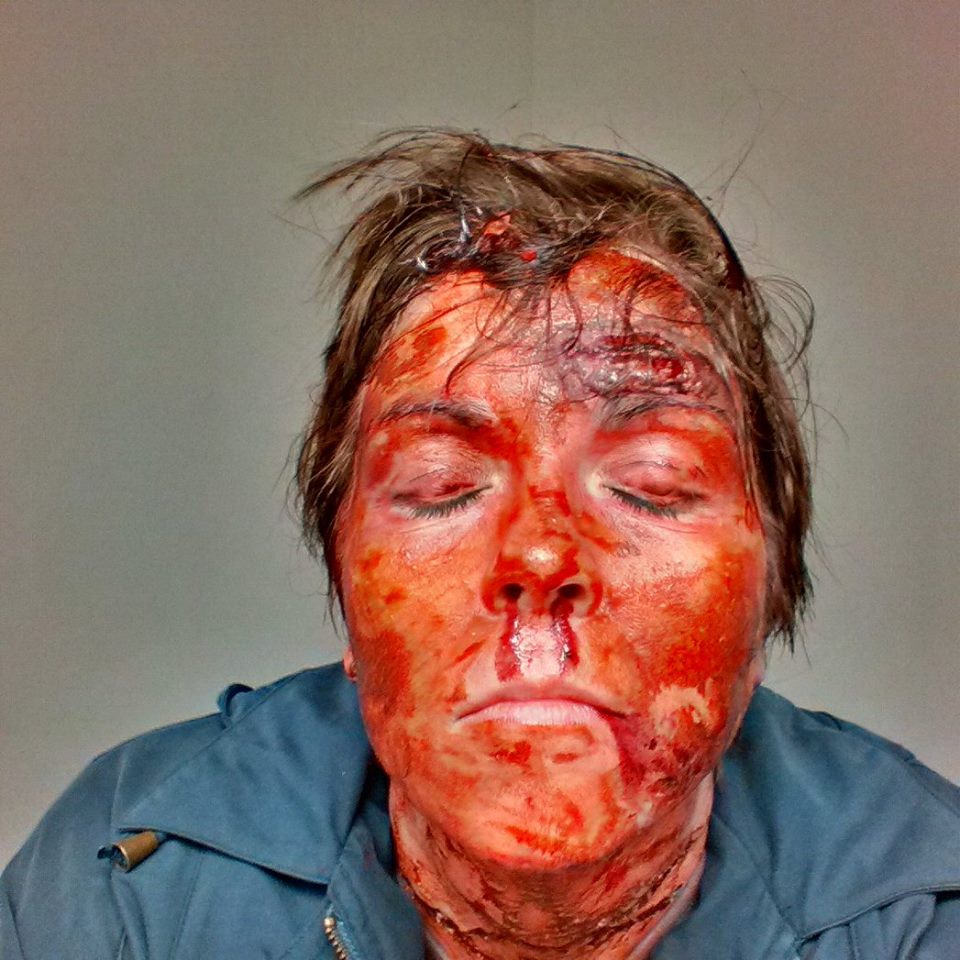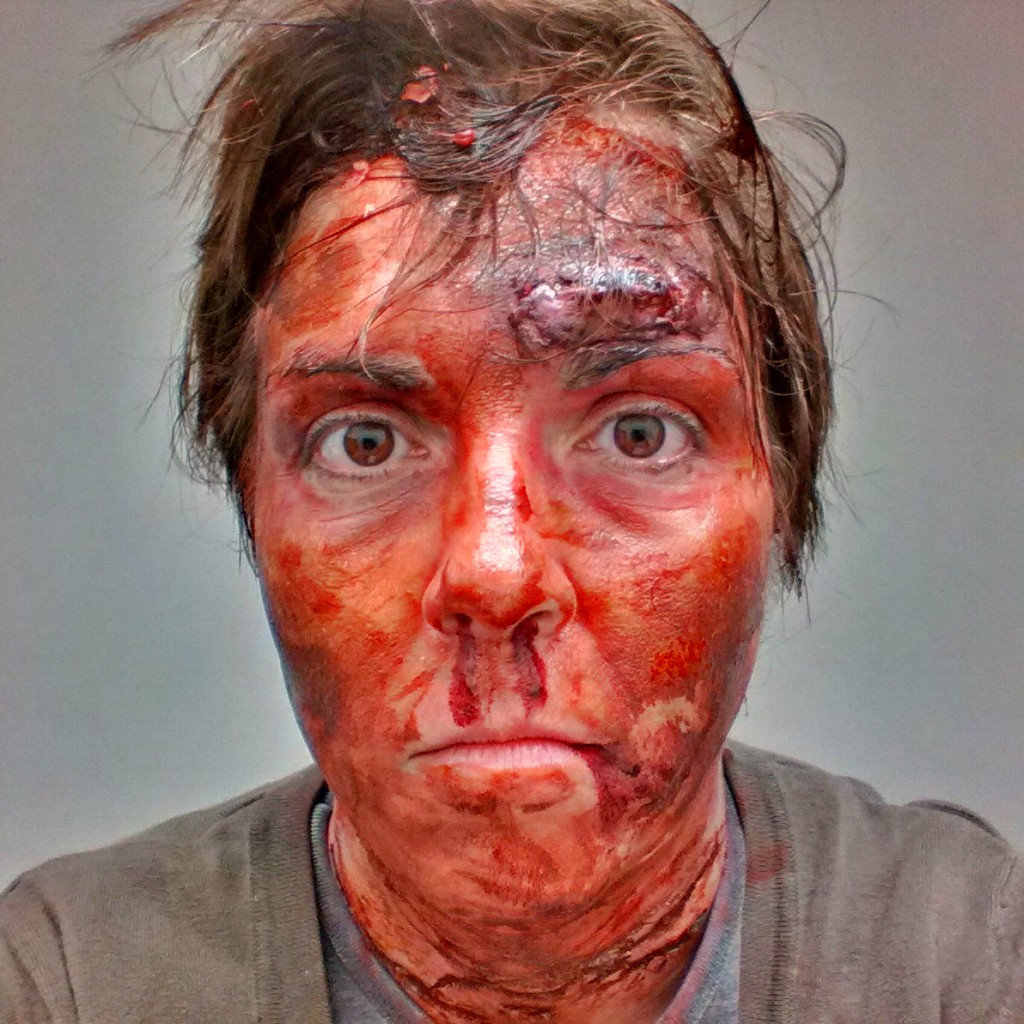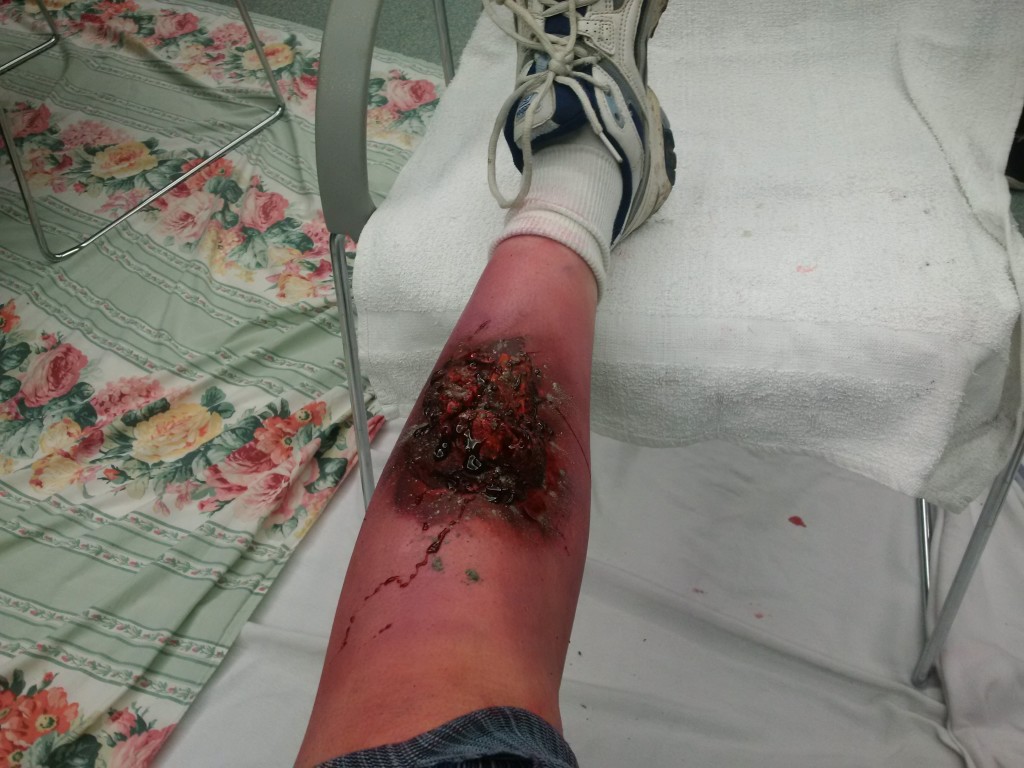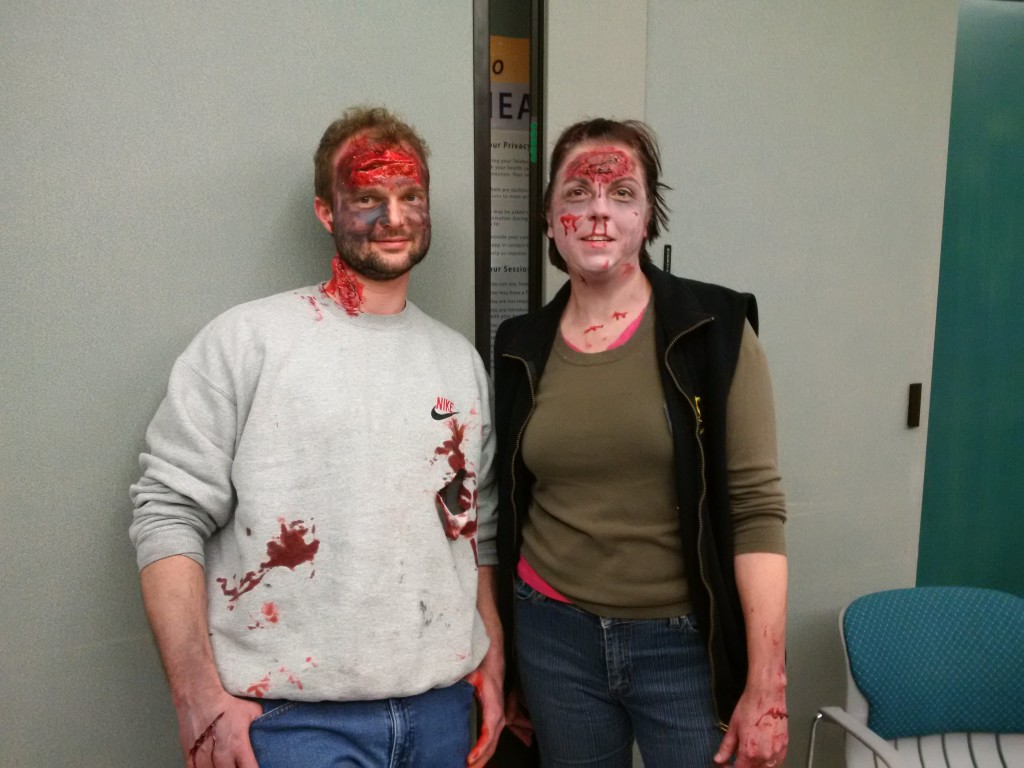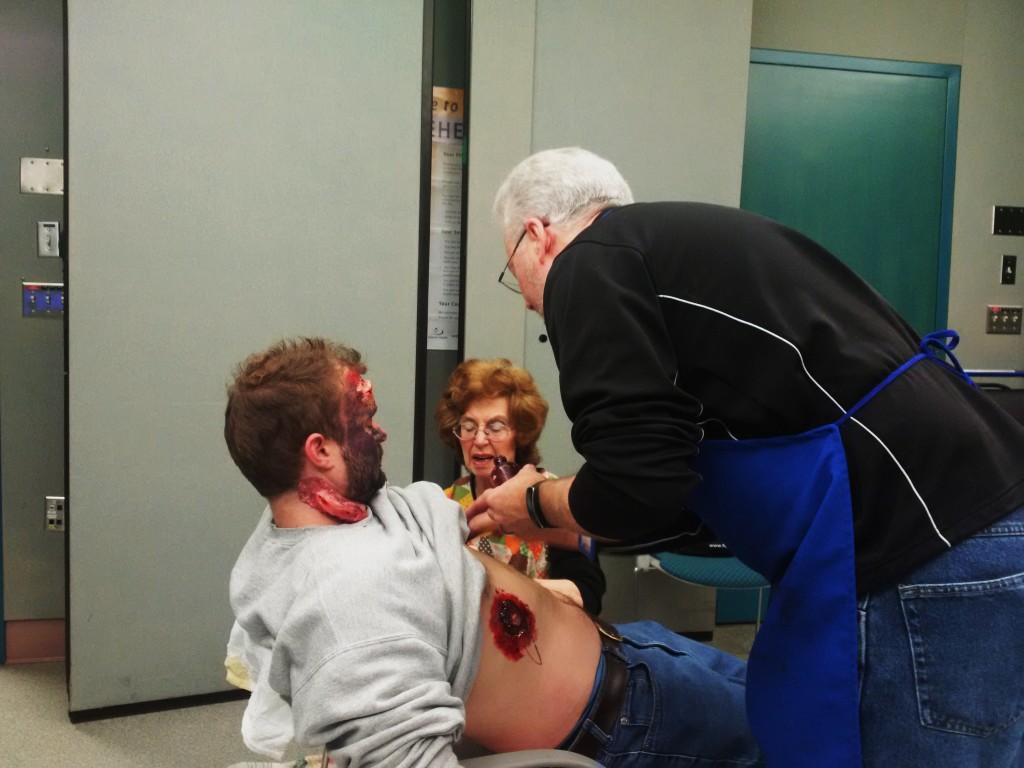Adventures in Powell River: Lying dead on the ground to make a point with young drivers
I’m lying on the ground, the asphalt wet and unforgiving. My limbs are stiff and one leg is bent at a weird, unnatural angle. I hear distant sirens and from the draft on my foot realize my right shoe is missing. The ground trembles with the approach of emergency vehicles and suddenly someone is checking my vitals, and finds none. I’m dead.
Not really.
P.A.R.T.Y.
This is a simulation, part of the P.A.R.T.Y. (Prevent Alcohol and Risk Related Trauma in Youth) Program being held in the parking lot of the Powell River General Hospital. The first P.A.R.T.Y. Program was in Toronto in 1986 and as of June 2012, it’s operating at over 100 sites around the world. Most are in Canada, but they’re also in the United States, Brazil, Australia, Germany, and Japan.
Here in Powell River, P.A.R.T.Y. is aimed at grade 11 students as a way of demonstrating to them the dangers and consequences of impaired and distracted driving.
I arrive at the hospital just before 0700. I’m wearing old clothes, clothes that can be ruined by scissors, make-up, and fake blood.
I’m to be a fatality with major brain trauma so things are going to get messy. In today’s scenario, I’m the passenger in a vehicle that hits a light post, and I wasn’t wearing my seat belt.
Soon after arriving, I meet Trevor, who works for Powell River Youth and Family Services Society, and who will be the impaired driver. Though this is a serious topic, for fun, we make up a backstory to get into character. We decide we’ve been together for several months but things aren’t working out due to Trevor’s drinking. In the moments leading up to today’s MVI (motor vehicle incident), Trevor and I were arguing, on the verge of Trevor breaking up with me. Nice guy, eh?
Lights, Make-up…
So the make-up team of Donna, Heather, and Glenn set to work on us. This is year five of P.A.R.T.Y. in Powell River, and these three are experts at making us look our worst. They take their job seriously, and have experience dealing with trauma; between them, they have backgrounds with St. John Ambulance and the military.
As we get set up with our prosthetics and blood, Trevor gets coached on how to behave out there at the crash site, considering the wounds he’s being given. He’ll have serious lacerations on the head, neck, and legs, plus a punctured lung and other internal injuries. He’s schooled on how his breathing should be and what typical behaviours he should exhibit.
Me, I’m dead, so I just have to lie still. It sounds easy but once I’m out there lying on the ground all mangled and the kids arrive and then the sirens and first responders, it’s a little surreal. Especially when I’m declared deceased and there’s a tarp laid over me.
I can still hear them working with Trevor, using the Jaws of Life to get him out of the car, and I can hear him bellowing in pain. It feels real. It’s a little freaky. Luckily, the rain has held off on this day, but still, it’s winter and the cold of the day adds to the reality.
What the students learn
After they extricate Trevor from the vehicle, they transport him to the ER and the students walk through each stage a patient would go through once admitted to hospital under these conditions.
They witness emergency medical personnel assess Trevor’s injuries and prep him for airlift transport to a Vancouver hospital.
They visit the morgue.
They hear about the lasting physical, financial, and emotional impacts Trevor will experience as the driver of a fatal MVI.
They hear that physical rehab can be a lifelong struggle.
They hear about the lasting effects of brain injuries by actual MVI survivors, and how life is never ever the same.
Why do we do this?
The simulation is run three times over a course of three days. Many, many hours go into this event every year with medical, emergency, school district, and mental health professionals lending their support.

From passenger seat to asphalt via windshield. I should’ve worn my seat belt, or better yet, not gotten into a vehicle driven by an impaired driver.
We do it because we want to send a message to these soon-to-be drivers and the message is this: you’re precious. Motor vehicles should be respected for what they are and full attention should be given when operating one. That consequences can last a lifetime and that especially in a small town like Powell River, the ripple effect from tragedy is far-reaching.
We are all connected and as a community, we care.
Angie Davey
Latest posts by Angie Davey (see all)
- Adventures in Powell River: Desolation Sound in a Kayak Made for Two - August 16, 2016
- Adventures in Powell River: Milking goats and making cheese - July 26, 2016
- Adventures in Powell River: Patricia Theatre’s gardens and ghosts - July 4, 2016


